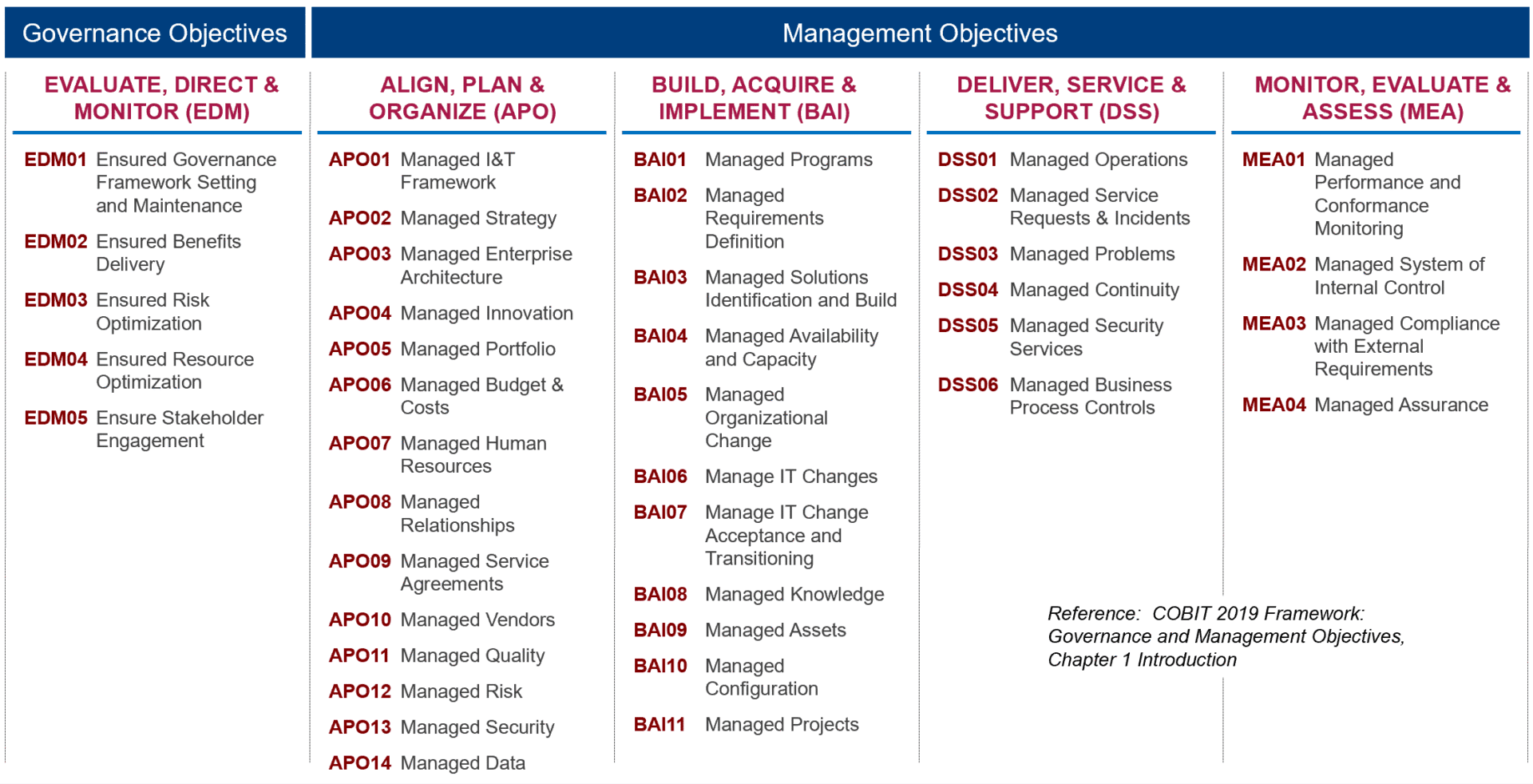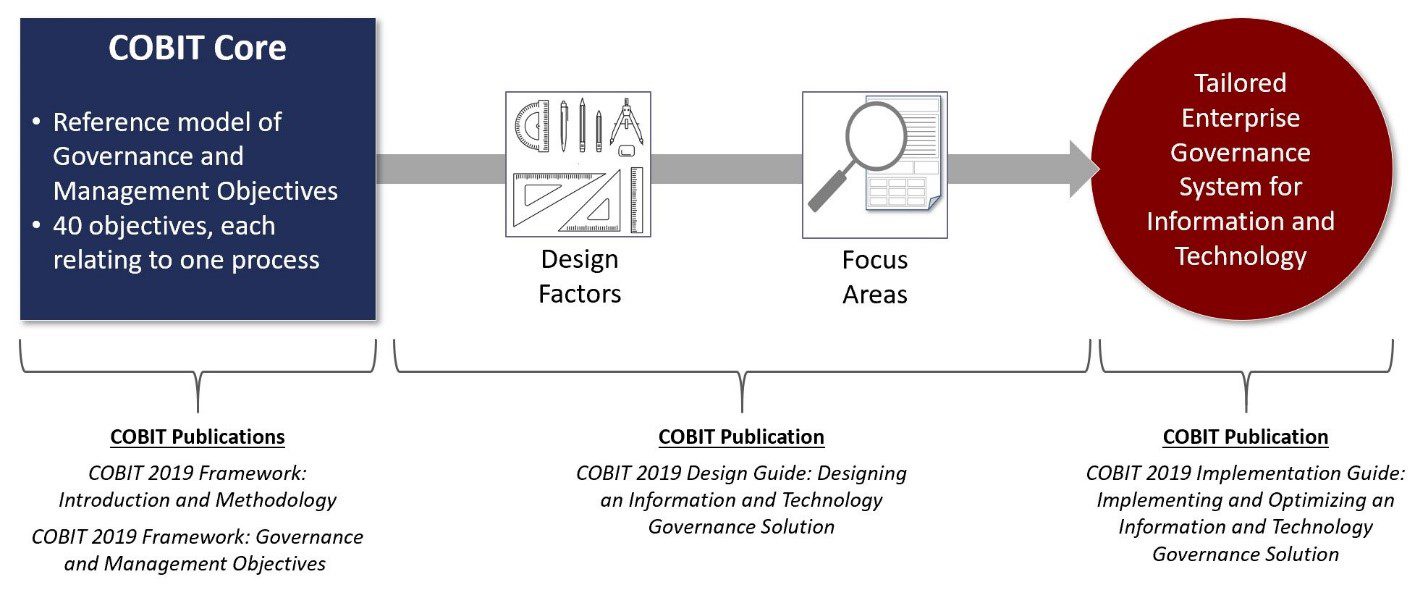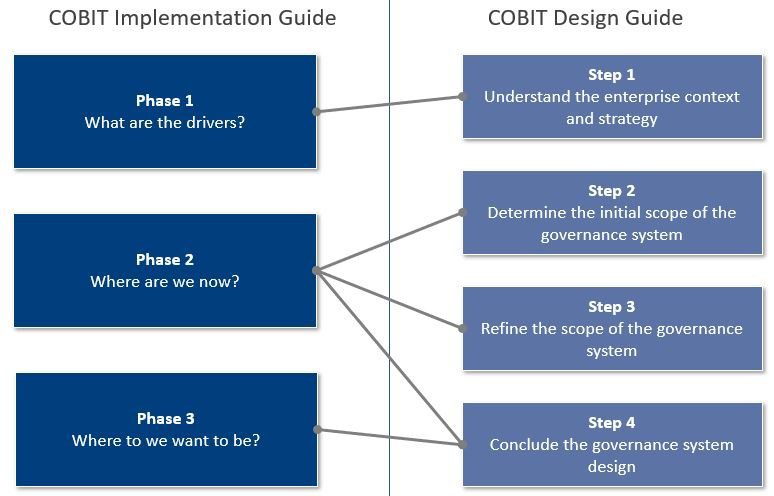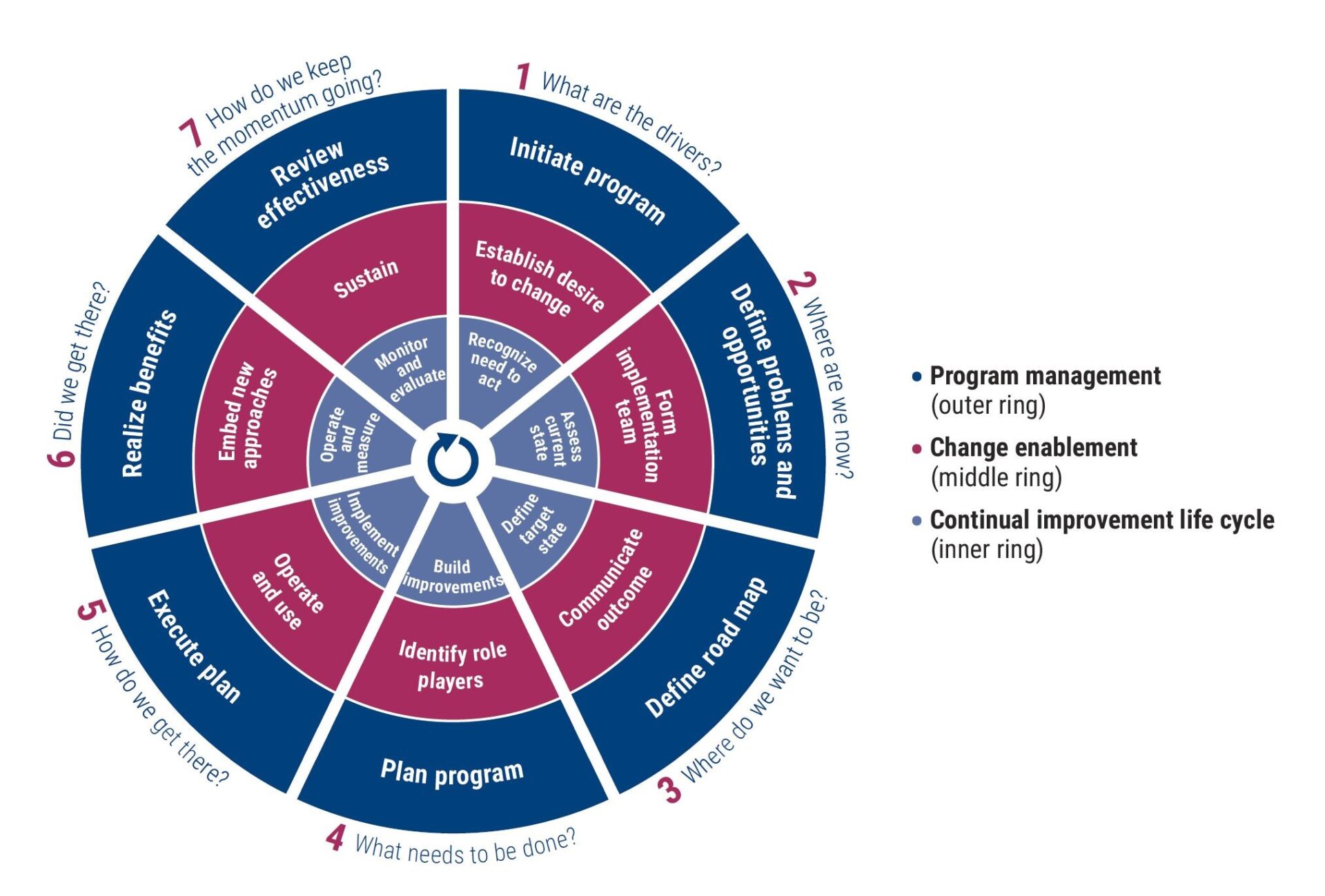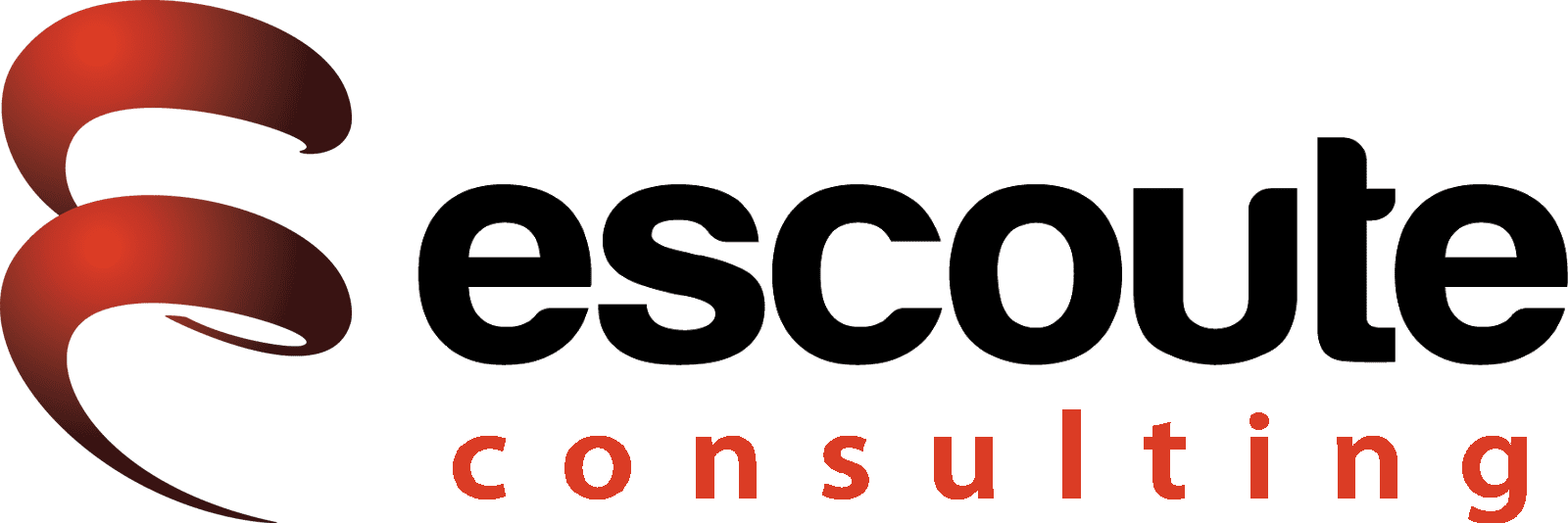Yes ‘decision by committee’ is often negatively associated with non-essential, seemingly off-target, purposeless meetings. Agreed (sometimes) – meetings for the sake of meetings is unproductive and a waste of a valuable resource…TIME. But if you think about meetings conceptually, meetings are actually the organizational thread – a venue for intellectual property (a.k.a. knowledge) that becomes a strategic asset for organizations. So then, I propose it is the actual structuring of people – knowledge embodied individuals – within the organization that is truly compromising (or not) to business success.
The members, setting and climate unify groups within an organization.
The members, the setting and the organizational climate inevitably bring the right pairing and/or unification to any group/sub-group within an organization. So while not a one-size-fits-all theory, hierarchically structuring leadership discretion will inherently bring collective vision and cross-boundary collaboration.
For our purposes today, we will focus on the distinguishing hierarchy between Governance and Management – both vital processes for high-performance organizations. COBIT5, a framework by ISACA for the Governance of Enterprise IT (GEIT) explains the difference between the two:

Compatible to organizational structures are interconnected roles, activities and relationships. I will again turn to the COBIT5 Framework to help distinguish functional stratums and further identify the need for compatible profiling when pairing individual competencies across function and/or operational specialty [Note: While COBIT5 uses an enterprise perspective, models can be paired to fit organizational need].

Owners and Stakeholders. Think highest power. Driven by fiscal and sustainability interests. Particularly charged by changes in: strategy, technology and regulatory.
Governing Body. Think board of directors. Accountable to owners/stakeholders for organizational success; responsible for management foresight. [Note: Identifies with COBIT5’s Governance structure referenced previously]
Management. Think executive leadership/’C-suite’. Accountable to Governing Body for organizational performance and responsible for management directives. [Note: Identifies with COBIT5’s Management structure referenced previously]
Operation and Execution. The people, technology and processes necessary to produce a product or service of value to end customers.
Once you conceptually identify with the functional differences between Governance and Management, you can profile and organize forums (committees) that maximize knowledge share and bring aspiring organizational value to stakeholders.
The difference between IT Strategy Committees and IT Steering Committees.
Compatible mind-share is critical for committee success, and while enterprise processes/principles can be conceptually neutral across business function (IT, Finance, etc.), performance outcomes are widely differentiated by functional sector. Thus for our purposes herein, the remainder of this paper will focus on IT practices explicitly for maximizing committee efficacy.

IT STRATEGY COMMITTEE. Ensures alignment between IT and business strategy through enterprise IT governance. Although this committee is often assumed to operate at the board level, it does not carry decision authority exclusively. This committee has dashboard authority and oversees IT management in partnership with other board committees (audit, business strategy, finance, etc.). The committee is composed of a chairman (usually board member) and board/non-board members based on IT knowledge and corresponding business insight.
Responsibilities:
- Provide IT insights to board and act as subject matter expert
- Monitor strategic IT plans
- Monitor enterprise resource availability to support IT initiatives
- Understand, Communicate, Mitigate IT risk (may also be coordinated with a Risk or Compliance Committee)
IT STEERING COMMITTEE. Oversees major projects – managing priorities and allocating resources with guidance from the IT Strategy Committee. There may be several steering committees within an organization depending on size, complexity and management culture. In any case, the steering committee should be the responsibility of executive management, providing a conduit between the governing body and program/project teams. Membership generally consists of varying business sponsors, the CIO and key advisors as applicable.
Responsibilities:
- Ensure programs/projects meet business requirements and align with IT strategy
- Determine overall level and allocation of resource to extend IT value across enterprise
- Communicate strategic goals to project teams and recommend changes to strategic plans
- Monitor and approve various architectures to support achievement of IT strategy
Final Thoughts.
Although an enterprise can have multiple committees and boards for various functions or specialties, the intent of this blog was to highlight two critical assemblies that can help in your quest for IT value. While I recognize there isn’t a one-size-fits-all approach, profiling roles and structuring by compatible competencies/interests, will improve productivity and ultimately increase meeting satisfaction. Following are four high-level take-away’s for optimizing both IT Strategy and IT Steering Committees:
- Ensure that your committee has tasks outlined and all members understand their charge.
- Strive for cross-boundary collaboration – IT Steering Committee should have representation from the IT Strategy Committee.
- Avoid getting lost in the details – committees are designed to guide, not solve tactical issues that should be handled at program/project level.
- ALWAYS remember – governance exits to provide value through benefit realization, resource optimization and risk mitigation.
COBIT 2019 Governance and Management Objectives Domains
Each of the 40 Governance and Management objectives are aligned with an applicable domain. For example: Governance Objectives are found in EDM, while Management Objectives are in APO, BAI, DSS and MEA. Each of these objectives relates to one process. Therefore COBIT 2019 has 40 processes. The schematic below outlines these.
COBIT Governance and Management Objectives link to Processes.
This is very important to know because these objectives encompass all the potential areas that an enterprise needs to address to support the overall needs of its stakeholders. It is important to note here that all these objectives, or processes, do not need to be at the highest state of capability or level of implementation. The idea is that based on certain attributes, companies can tailor which ones, and to what level, are implemented. Which takes us to a tailored governance system.
Getting from the COBIT “Core” to a tailored governance system
One of the biggest challenges is taking the COBIT Core to a tailored system. This is where additional guidance is needed. There are many ways to do this, but to continually create value for the enterprise, make sure you consider your organization’s unique aspects. This is why COBIT introduced Design Factors and Focus Areas.
As with many frameworks, COBIT has historically been advertised as a flexible framework that can be modified to fit the needs of any enterprise. That sounds easy until you actually try to adopt a framework, so in the 2019 release, ISACA provide some much-needed guidance on how to do this. In addition to the guides there is also a very handy toolset that can get you started. I’ll show you more on that later.
What exactly does having a tailored governance system mean? This means that your enterprise has prioritized governance and management objectives, considered applicable design factors, used specific guidance from focus areas, and determined the target capability and performance management aspects of the system of governance over I&T.
Linking the COBIT2019 Core to a tailored system.
Design Factors and Focus Areas
In order to get from a framework with many options to a tailored system, design factors and focus areas should be considered.
Design factors can influence the blueprint of your enterprise’s governance system and position it for the successful use of I&T. Think of these as key points that can assist in creating a tailored governance system that truly aligns with specific and unique enterprise needs. The design factors include:
- Enterprise strategy
- Enterprise goals
- Risk profile
- I&T-related issues
- Threat landscape
- Compliance requirements
- Role of IT
- Sourcing model for IT
- IT implementation methods
- Technology adoption strategy
- Enterprise size
- Future factors
If you are looking for specific information on each of these design factors, refer to the COBIT 2019 Design Guide, pages 22-28.
Design factors have a huge impact on how you will design your governance system. There are three ways these can have influence and I have noted them below.
Impact of Design Factors.
A focus area “describes a certain governance topic, domain or issue that can be addressed by a collection of governance and management objectives and their components.” (COBIT Design Guide, ISACA). You can add or remove focus areas based on their applicability to your situation. These can include:
- Small and medium enterprises
- Cybersecurity
- Digital transformation
- Cloud computing
- Privacy
- DevOps
As of the writing of this post, there is no specific guidance released on leveraging Focus Areas in designing a tailored governance system. This information will most certainly be published by ISACA soon. Of course, I’m looking forward to this guidance as it really hits on some hot topics we’re seeing today.
Does the difference between Design Factors and Focus Areas still sound confusing to you? Don’t worry, it does to me too. I boil the difference down to this: think of DESIGN FACTORS as specific descriptions of your company while FOCUS AREAS are areas of influence, whether internal or external.
Workflow for designing a tailored governance system
COBIT 2019 provides a proposed workflow for designing this tailored governance system. Although the publication goes into greater detail, here is a summary of what the guidance looks like.
Steps to creating a tailored governance system using the COBIT Design Guide.
By following these steps (note, you are not required to complete ALL sub-steps), you can create a governance system that is tailored to your needs. This should provide prioritized governance and management objectives or related governance system components. However, this could result in conflicting guidance which is highly possible if you are using multiple design factors. As you most likely know, there is no magic formula to this. You may have to deal with discrepancies on a case-by-case basis. Our business environment is very dynamic, so as conditions and strategies change, you should also review the governance system regularly.
Linking the Design Guide and Implementation Guides
The good news is that the COBIT Implementation Guide in the 2019 update hasn’t really changed much since COBIT5. This is good in my opinion, it is a great model, it just needed some additional guidance – which we are getting with the Design Guide.
In case you are not familiar with this, the COBIT implementation roadmap looks like this:
The Seven Phases of the COBIT Implementation Roadmap. 2018 ©Information Systems Audit and Control Association, Inc. (ISACA).
The governance and management of enterprise I&T should be integrated with end-to-end enterprise governance. Therefore, the COBIT 2019 Implementation Guide emphasizes an enterprise-wide view of I&T governance, recognizing the relationship between business and IT-related activities.
COBIT suggests using a program approach to implementation, and I couldn’t agree more. If you look at the roadmap in the figure above, you will see that there are seven steps to an implementation approach and each step has three perspectives, or rings. The idea is that this cycle becomes a continuous approach until measurable benefits are generated, and the results become embedded in ongoing business activity. The goal is to establish the governance and management of enterprise I&T as a normal and sustainable business practice.
The Design Guide and Implementation Guide have a very distinct relationship and specific uses.
Although the Design Guide identifies some very specific synchronized points, the figure below summarizes how they are used together:
COBIT Design and Implementation Guide Relationships.
You may recognize that not all the phases in the Implementation Guide are linked to the design guide. This is because the first three phases are specifically related to the design of a governance system, while the remaining phases are focused on actual implementation. Personally, I refer to other frameworks to assist in the actual implementation. These are things like the PMBOK, PRINCE2, and of course processes in COBIT.
Using tools to assist in designing your new governance system
Finally! Let’s get to the fun stuff – seeing how this all comes together. When ISACA released the COBIT 2019 Design and Implementation Guides, they also released a toolkit that is available for download here. This Excel-based tool helps facilitate the application of the workflow I described above. The toolkit includes:
- Introduction and instructions
- A canvas tab that consolidates results including target capability levels
- One tab for each design factor
- Summary tabs that graphically represent the outcomes of steps 2 and 3
- Mapping tables for design factors
I highly suggest you go download this tool and play around with it a bit. All of the things I’ve talked about in this post will become clear. Of course, the tool is explained in more detail in the Design Guide, but check out this short clip that walks us through an example scenario. I’ve created some inputs for a fictitious global manufacturing company and developed a tailored governance system specifically designed for their needs. Hopefully this helps put it all together.
Closing and suggestions
We’ve covered a lot of ground in this post. I hope it has been valuable in helping you understand how leverage COBIT 2019 to truly create a governance and management framework that is customized to meet your specific enterprise needs.
As always, your thoughts and comments are appreciated on this post, as well as my Twitter posts @escoute1.




